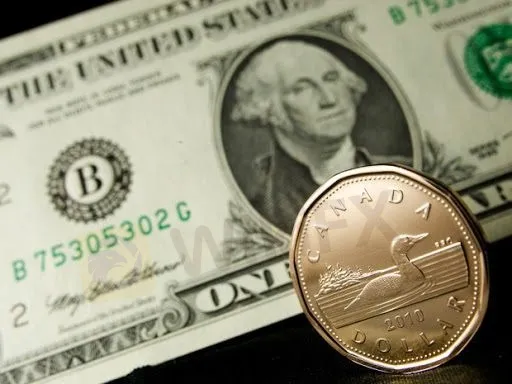Monthly FX Update | July 2023
Abstract:June, saw divergent economic outlooks. Initially, the US dollar was under pressure as many believed the Federal Reserve had completed its last rate hike for this cycle. However, this perception changed following the release of robust US economic data and hawkish projections in the FOMC dot-plot.

Economic Outlook and Summary
June, saw divergent economic outlooks. Initially, the US dollar was under pressure as many believed the Federal Reserve had completed its last rate hike for this cycle. However, this perception changed following the release of robust US economic data and hawkish projections in the FOMC dot-plot.
Furthermore, Chinas economic rebound from the pandemic has been disappointing, and ongoing tensions with the United States are expected to influence global risk sentiment in July. The latest PMI data from China indicates continued struggles in their economy, and market participants are hopeful that rumors of new stimulus packages being announced will have a positive impact and provide a boost to the global economy.
On July 21, the European Central Bank (ECB) is widely anticipated to announce a 25 basis points rate cut, indicating the potential for further monetary policy adjustments in response to the economic conditions.
The USD and Federal Reserve
The US dollar initially retreated in the first half of June but rallied towards the end of the month. The change in sentiment shifted from expecting rate cuts in the fourth quarter to anticipating two more rate increases, one in the current month and the other in September. This shift in sentiment is influenced by the remarkable resilience of the US economy.
During the first quarter, the economy grew at a rate of 2.0%, which was significantly higher than the expected 1.3% year-on-year growth. Despite inflation showing a decline, the rate of decrease is not considered fast enough for policymakers. As a result, bond traders increased the yield on the US 10-Treasury to 3.86% on July 4, up from a low of 3.60% observed in June.
The Canadian Dollar and Bank of Canada
The Canadian dollar climbed steadily throughout June, powered by the Bank of Canada‘s (BoC) somewhat surprising rate increase on June 7 and the FOMC’s decision to leave US interest rates unchanged. However, this trend is expected to be reversed in July, with the Fed likely to hike rates by 25 basis points (bp) while the BoC keeps rates unchanged.
The Quarterly Business Outlook Survey (BOS), which was released on June 30, showed weakness across the board. The BOS indicator fell from -1.07 in the last quarter to -2.15. (The Bank describes the BOS as “a summary measure of core questions in the BOS.”) This may be sufficient to keep the BoC on the sidelines, unless Canadas employment report (forecasting 20,000 jobs with an unemployment rate of 3.6%) turns out to be significantly stronger than expected.
Meanwhile, the odds for a Fed rate hike on July 22 are at 88.0%, which will support the USDCAD pair, indicating a range of 1.3100-1.3400 for July.
Oil Price
West Texas Intermediate traded choppily in the well-defined $67.00-$74.00/barrel range. Prices reached the peak at the beginning of June when Saudi Arabia announced a unilateral plan to cut oil production by 1.0 million barrels per day. However, prices quickly retreated due to both US recession fears and disappointment from Chinas sluggish economic rebound from Covid-zero policies. The price action was choppy for the rest of the month, with the prospect of higher US interest rates limiting gains.
Saudi Arabia announced an additional 1.0 million barrels per day (m/bpd) production cut beginning in August and was joined by Russia, which promised to cut its production by 500,000 barrels. The cuts should serve to reinforce the $67.00 floor and keep the focus on resistance in the $74.50-$75.00/barrel area.

Read more

Broker Comparsion: FXTM vs AvaTrade
FXTM and AvaTrade are two well-established online brokers offering forex and CFD trading across global markets. Both enjoy strong reputations and high ratings on WikiFX—FXTM holds an AAA overall rating, while AvaTrade scores 9.49/10, indicating they’re regarded as reliable choices by the community. However, since brokers have great reputation in the industry, how do we know which one is more suitable for individuals to invest in? Today's article is about the comparison between FXTM and AvaTrade.

Shocking Move: Yen Breaks Past 140 Barrier!
The yen's breakout above the 140 mark has caught global attention, and the reasons behind it are more than technical.

FINRA fines SpeedRoute for alleged rule violations
The Financial Industry Regulatory Authority (FINRA) has imposed a $300,000 fine on SpeedRoute LLC for a series of supervisory, risk management, and anti-money laundering (AML) program deficiencies spanning from 2017 to the present. Of this amount, $75,000 is payable to FINRA, with the remainder offset by SpeedRoute’s limited ability to pay. In addition to the monetary penalty, SpeedRoute has been censured and ordered to overhaul its compliance framework, including enhancing its written supervisory procedures (WSPs) for market access controls and strengthening its AML program.

Nigeria's Oil Crisis: How Are Stakeholders Responding?
Despite being rich in oil, Nigeria struggles with refining shortages. What’s behind this paradox, and how are different actors reacting?
WikiFX Broker
Latest News
Love, Investment & Lies: Online Date Turned into a RM103,000 Scam
Broker Took 10% of User's Profits – New Way to Swindle You? Beware!
Pi Network: Scam Allegations Spark Heated Debate
Broker Comparsion: FXTM vs AvaTrade
Account Deleted, Funds Gone: A New Broker Tactic to Beware Of?
Broker’s Promise Turns to Loss – Funds Disappear, No Compensation!
El Salvador and U.S. Launch Cross-Border Crypto Regulatory Sandbox
The Instagram Promise That Stole RM33,000
Coinbase Launches Bitcoin Yield Fund for Institutional Investors
Before You Trade the Next Big Thing, Remember the Dot-Com Collapse
Rate Calc

